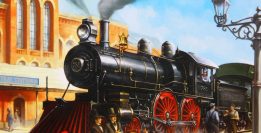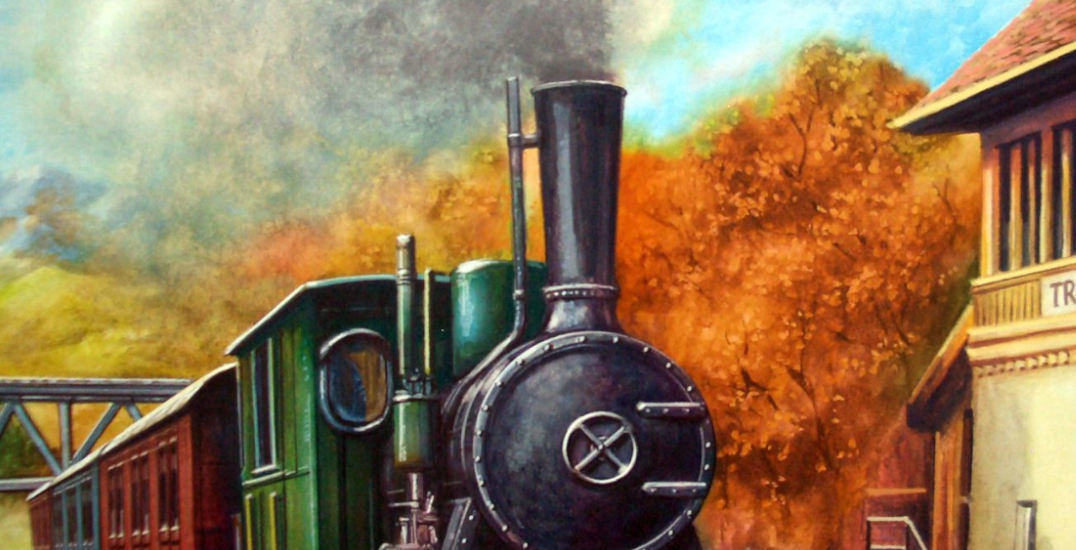
How do you win a game without taking a turn? This question lies at the heart of German Railways, the second entry in Winsome’s Historic Railroads Series. Like Chicago Express, it’s a simple, fast-playing game of investment and route-building but also one of the most counter-intuitive games I’ve ever played.
WINSOME
The goal of German Railways is to become the richest player at the table by investing in railroads. Each turn, you have only two actions: To either auction a share of your choice or to expand a railroad you’re already invested in. When the routes of two companies touch, they pay out dividends but the company that made the connection pays twice as much as it normally would.
These mechanics are simple but make for a tense game. You want to make money quickly to buy more shares but making a connection early in the game reduces your total income. You want your company to be the one making the connection, so you get twice the money, but then you are not expanding as much and may connect with fewer railroads.
To add to the complexity of decisions, each company has a different power. One can easily build through hilly terrain, another expands slowly and a third cannot pay dividends until it connects certain places on the map. Sometimes, even the location of a company might be part of their power. Looming at the rightmost corner of the board, the Prussian Railroad may use its four builds a turn to develop a massive connection in Berlin no other company can match.
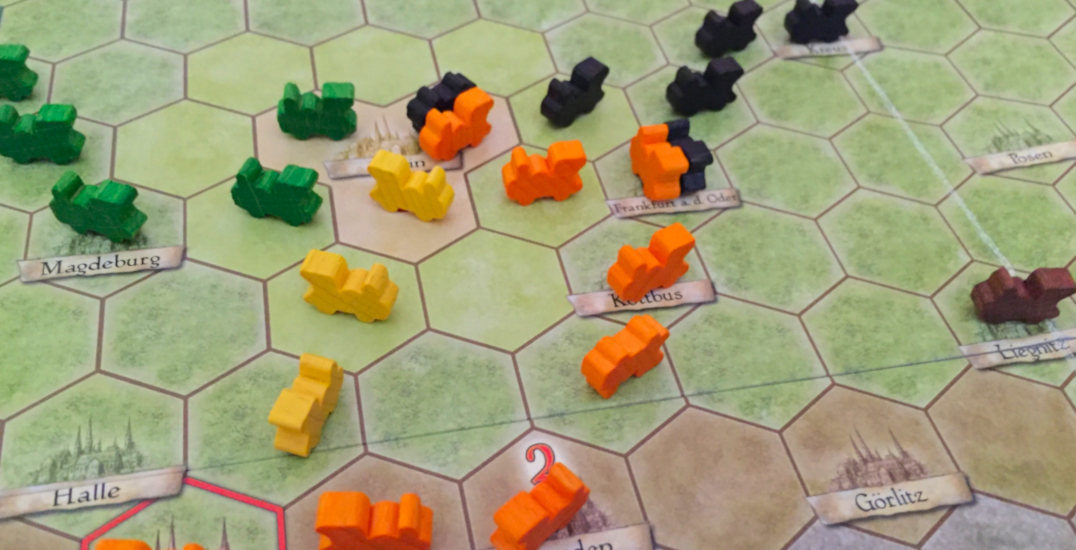
Since only one company can occupy a non-city hex, there are a lot of offensive options available to each railroad. You can actively circle or encroach another company, or take a roundabout route to promote it getting closer. Berlin has a finite amount of approaches and may not remain accessible if you don’t play your cards right.
TURN ORDER
But these tensions are just the battlefield in which the game is fought. Each turn, players put a few of their tokens in a bag to determine which players get a turn and when. The higher value of your shares, the fewer tokens you put in, meaning you may end up having several actions in a row, or none at all depending on the investments you have.
Here lies a large part of the strategy of the game. While it may seem like it, it’s not a catch-up mechanism, but a way to drive up the importance of careful investment. Good, thoughtful investments do not require your personal involvement. If you play German Railways properly, you can win without having a turn.
Sounds ludicrous, doesn’t it? Yet, it’s perfectly possible. After all, you don’t need to have a turn to buy shares in an auction. Dividends will be paid when railroads connect, even if you did not help them do so. As long as the actions of other players work for you, you don’t need a turn.
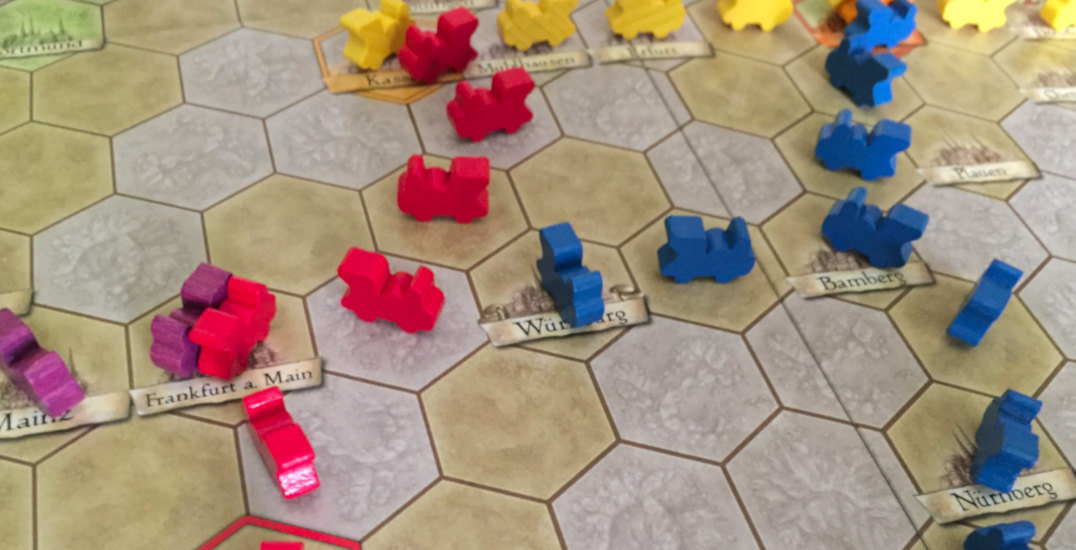
This feature makes for a very counterintuitive game. But it’s counterintuitive in a compelling way. Understanding the rules and the rhythm of play is easy. There’s no obscure piece of trivia to keep in mind before plunging in. The difficulty lies in the best path forward not being the one you would expect.
The way dividends work is a perfect example. Since dividends are paid when two railroads connect, chances are you are benefitting multiple players, not just yourself. And since they are only paid when a connection is made, you can harm a company by connecting to it too early.
It’s fun. Auctions, big dividends and getting the timing just right are fun, dramatic elements. Despite the brainburning nature of German Railways, I smile and laugh. There’s this bubbling tension to be the one making the connection because it gives you twice the money, but also reasons to take it slow and delay it for a while.
CONCERNS
I had a few concerns about German Railways, but they all proved unfounded. At first, it seemed like lucky streaks could decide a match, but having turns are not vital enough for it to matter. Then, I worried a runaway leader could lock the game down but their grasp on the game ended up being weaker than expected. Variety was also better than expected, with each game diverging radically after the initial auction.
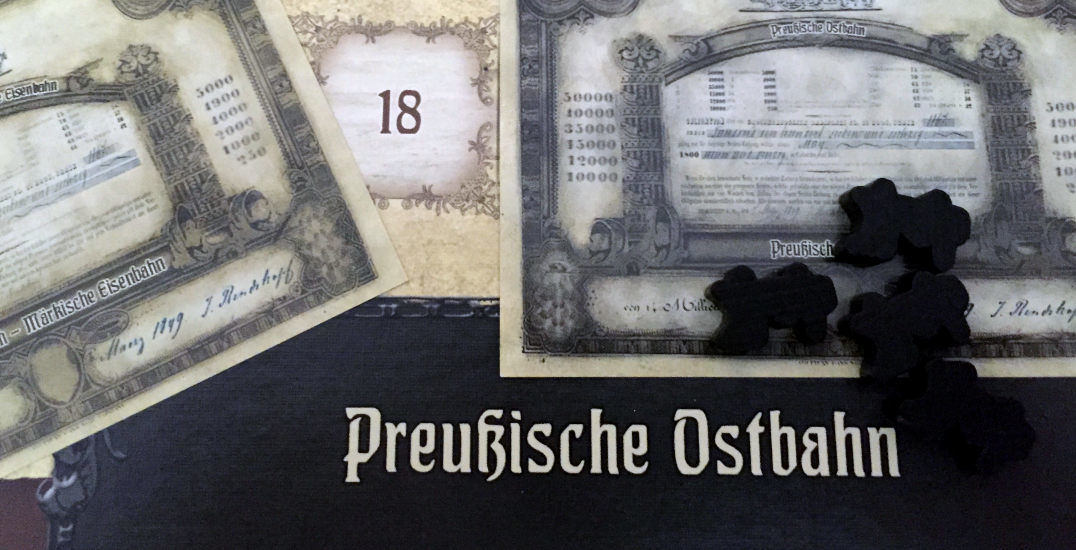
My largest grievance about the game is the lack of player aids. With so many railroads, each with their own power, it can be a bit difficult to remember all the fine details. Having the company powers on the board would have been a small, but welcome addition.
I’m also not fond of the design of the stocks. Unlike Chicago Express, they all have the same drawing on them and colours are close to each other. I’ve found some difficulty in telling apart the brown, yellow and orange shares at a glance, especially from across the table. My board also refuses to lay flat.
Still, Queen’s version of the game is beautiful. Like Chicago Express, the little wooden trains look great on the board while being easy to play with. Unlike the stocks, their colours are easy to tell apart and so are the different spaces on the board.
Overall, German Railways is a beautiful game whose counter-logical nature might not appeal to the average gamer. But I think it will please those looking for a little twist or trickiness at their tabletop.
| GERMAN RAILWAYS (2008) | |||
|---|---|---|---|
| GAME DESIGN | John Bohrer (as Harry Wu) | ||
| ART | Harald Lieske | ||
| NUMBER OF PLAYERS | 3-5 (Best with any number) | LENGTH | 60 Minutes |

